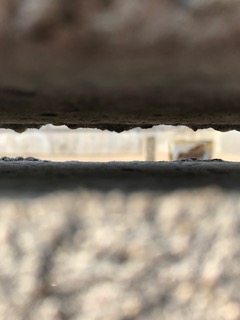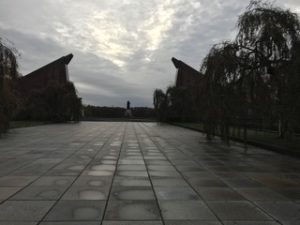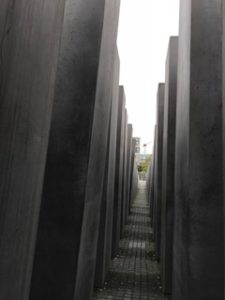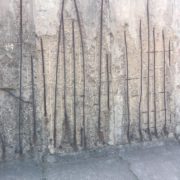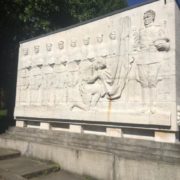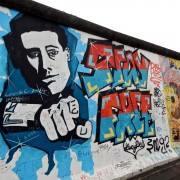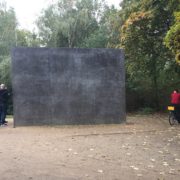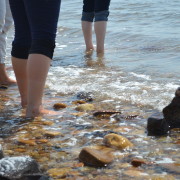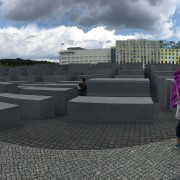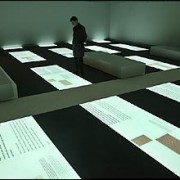Viewing the Past from the Present
By Leah Killian
Berlin is filled with many monuments and statues. Walking around the city it is very hard to miss these markers of history. Each one was built for a different purpose, at a different time, by different people. The city remembers it’s past, both the good and the bad, through memorials. The Berlin Wall Memorial shows that Berlin is open to its past. They don’t try to hide anything from view. While going through the memorial there are many different parts, but one of the strongest moments for me was the wall of victims, particularly the children. There was no sugar coating of the death of several children because of the Berlin Wall. Many countries would try to cover up the unsavory parts of their past but Germany uses their past, and the pain of the past to teach the future generations why something like the Berlin Wall must no happen again. The memorial highlights the pain and isolation that the East German people experienced because of the Wall and does not let the people of today’s Germany forget or write over that pain.
The same can be said about the Soviet Memorial. In the contemporary world, we like to paint the Soviets as the bad guy. This narrative comes from a long history of communism in Russia, which the West is strictly opposed to. However most of the world also tends to forget how much the USSR helped win the Second World War and how many men they lost trying to liberate Europe from the Nazi’s. This is not to say that the Soviet Union was not bad, because they did many terrible things to the citizens of the lands they liberated, but we tend to forget their contribution during WWII. The Soviet Memorial in Berlin still stands to this day, even though it was put up during the soviet control of East Berlin. It is a testament to Berlins past and a nod to the Soviet soldiers who died to free the people of Europe. The monument, both a tribute to the Motherland and a graveyard for almost 5000 Soviet soldiers, shows that Berlin does not want to forget its history. While the creation of East and West Germany, and Berlin is not a happy moment in Germany’s history it is an important part of knowing who Germany is today. Without this statue, the city would lose part of its history that, while it may not be all good, is important in a larger sense.
A major memorial that show Berlins connection with its past is the Memorial for the Murdered Jews of Europe. This memorial was opened in 2005, 60 years after the end of World War II. As I walked around the memorial I understood why there was such a large controversy surrounding it. To some it looks like pieces of rock stuck into the ground, to others the tombstones that those who died in the Holocaust never got. Whether people like this monument or not, it is a place that opens history. By being a sort of interactive memorial that people get to walk through, people can have their own experience of what this history means, rather than just looking at a statue. By placing this memorial in the heart of berlin, the German people are saying that they ae open to their history and how it is perceived. There is controversy surrounding it just like controversy surrounds Germany’s past. Yet the fact that there is even a memorial at all is a testament to the past and the future.
Memorials in Berlin tell the tale of time. From all different eras, and representing different times the monuments are a look into a past. They also say much about the city today and how it is open and accepting of its history both the good and the bad.

